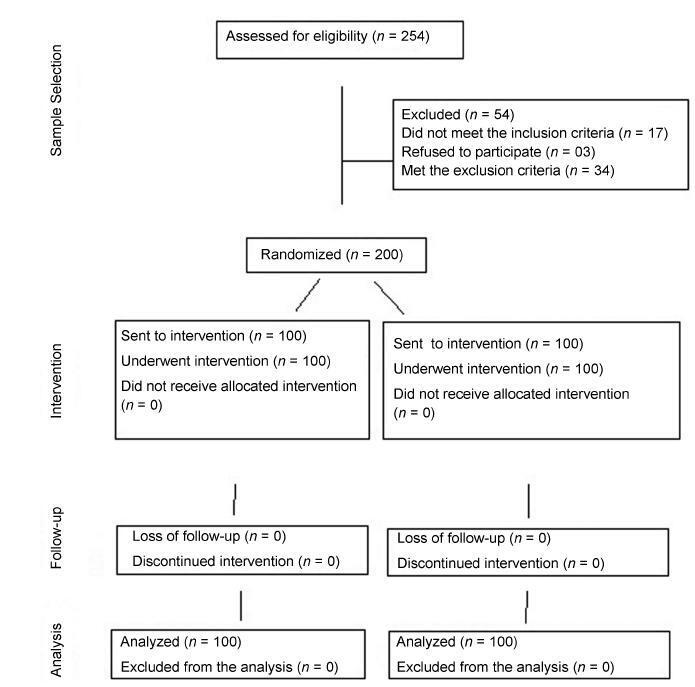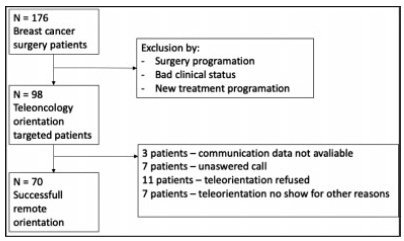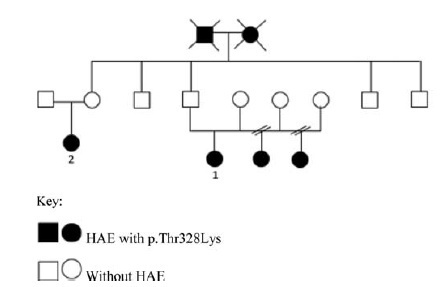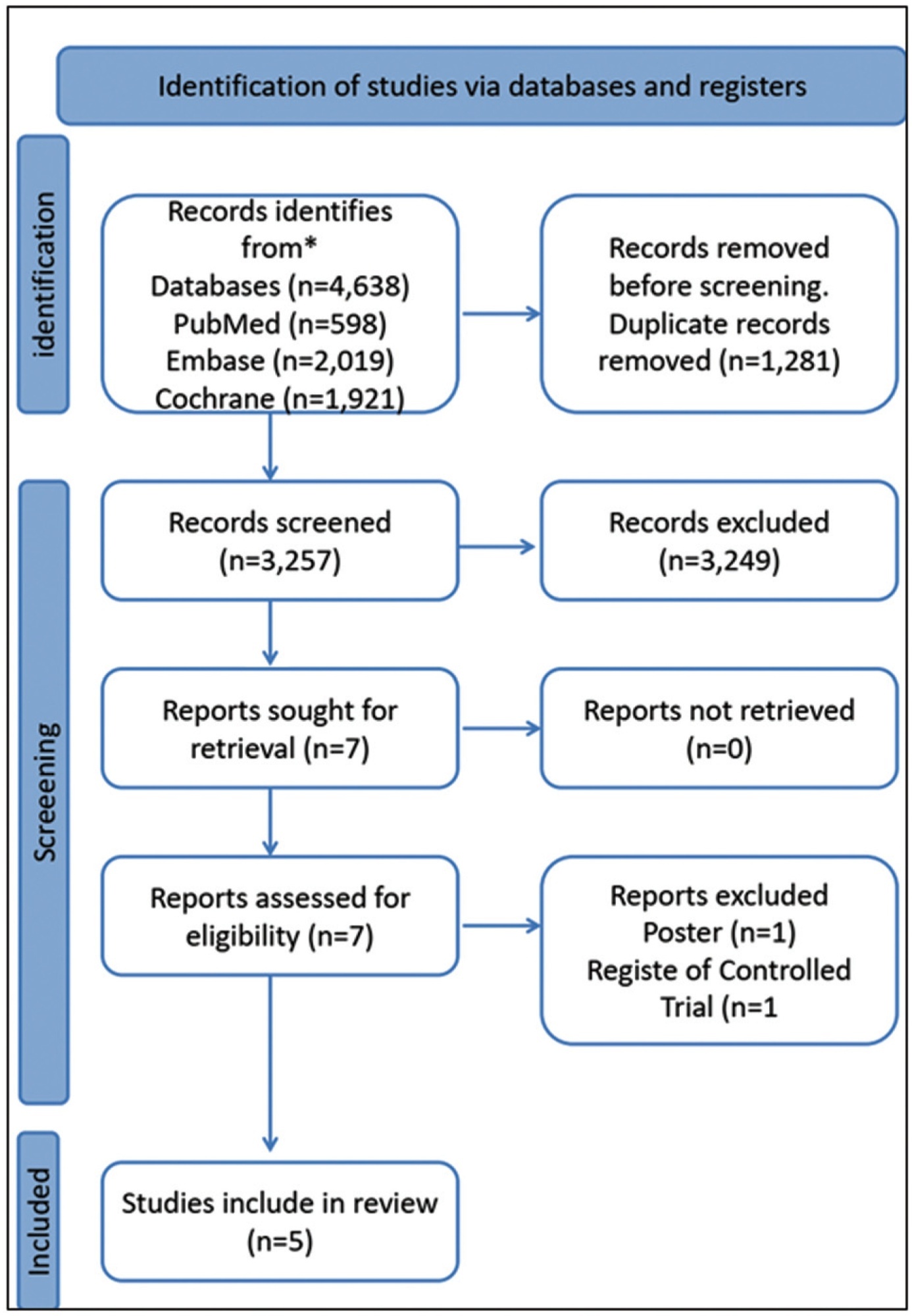Summary
Revista Brasileira de Ginecologia e Obstetrícia. 2019;41(2):84-89
To compare low doses of pethidine with dipyrone in labor analgesia.
In a randomized prospective study conducted by Universidade de Fortaleza, in the state of Ceará, Brazil, between May and December 2016, 200 full-term parturients, with very painful uterine contractions and exhibiting uterine cervix dilatation ≥ 5 cm, were selected to receive a single intravenous dose of either 0.25 mg/kg of pethidine (n = 100) or of 25 mg/kg of dipyrone (n = 100). Pain was assessed using the visual analogue scale. The data were analyzed using the Student t-test, the chi-square test and the likelihood ratio.
There was a significant improvement in pain in 35% of the parturients. Both drugs presented a similar analgesic effect 1 hour after the intervention (p = 0.692). There was no analgesic effect during the evaluation of the second hour after the intervention with pethidine or dipyrone. There were no adverse effects, such as maternal drowsiness, nausea or vomiting, related to the drugs used.
Pethidine in low doses and dipyrone presented equivalent analgesia during labor. Public Registry of Clinical Trials.

Summary
Revista Brasileira de Ginecologia e Obstetrícia. 2021;43(11):840-846
The present study aims to assess the feasibility and patient satisfaction of teleoncology orientation in a vulnerable population of breast cancer patients assessed in a government health system during the coronavirus pandemic in 2020.
Eligible patients received an invitation to receive remote care to minimize exposure to an environment in which the risk of respiratory infection was present. The means of communication was telephone through an application that allows free conversation with no charge. An anonymous-response questionnaire based on a Likert-type scale was sent through a cell phone application or e-mail directly to each patient or close relative of the patient immediately after teleconsultation. Responses to the questions, which addressed utility, facility, interface quality, interaction quality, reliability, satisfaction, and interest in future evaluation, were compiled and analyzed.
A total of 176 eligible patients scheduled for consultation were evaluated and 98 were included. Seventy (71.4%) successfully undertook the teleorientation. The questionnaire was submitted by 43 (61.4%) patients. The overall teleoncology orientation was classified as very positive by 41 (95.3%) patients. Specifically, regarding the questionnaire items, 43 (100%) patients scored 4 or 5 (agreed that the teleconsultation was beneficial) concerning the facility, followed by 42 (97.2%) for the interface quality, 41 (95.3%) for both utility and interaction quality, 40 (93%) for satisfaction and interest in future evaluation, and, finally, 39 (90.6%) for reliability.
Teleoncology orientation of low-income breast cancer patients is most feasible and leads to high patient satisfaction.

Summary
Revista Brasileira de Ginecologia e Obstetrícia. 2020;42(12):841-844
Primary hyperparathyroidism is an endocrine disorder characterized by hypercalcemia and elevated or inappropriately normal levels of parathyroid hormone. The diagnosis is based on a biochemical evaluation, and a neck ultrasound is the first choice during pregnancy to access the parathyroid glands. Manifestations during pregnancy are rare and can be present with life-threatening complications, so the diagnosis is challenging. The conservative treatment is limited, and there is not enough data about its safety and efficacy during pregnancy. Surgery is the only curative treatment, and a parathyroidectomy performed during the second or third trimesters is considered safe. Recently, some authors suggested an association between primary hyperparathyroidism and preeclampsia. We describe a case of preeclampsia with severe features at 27 weeks of gestational age. The severity of the preeclampsiamotivated an early termination of the pregnancy by cesarean section. During the postpartum period, the patient presented life-threatening complications, such as severe hypercalcemia and acute pancreatitis. An ultrasound exam found two parathyroid nodules, suggestive of parathyroid adenomas. The patient recovered after the pharmacological correction of the calcemia levels.
Summary
Revista Brasileira de Ginecologia e Obstetrícia. 2020;42(12):845-848
To verify the efficacy of short-term prophylaxis for vaginal or cesarean section childbirth with plasma-derived C1-inhibitor concentrate in pregnant women. They should have hereditary angioedema (HAE) and normal plasma C1-inhibitor.
Case report of pregnant women diagnosed with HAE with normal C1- inhibitor who had been treated with intravenous C1-inhibitor concentrate for prophylaxis of angioedema attacks when hospitalized for delivery. The exon 9 of the Factor 12 (F12) genotyping gene was performed by automatic sequencing in all patients.
Three cases of pregnant women with HAE with normal serum level of C1- inhibitor are reported. The genetic test detected the presence of a pathogenic mutation in the F12 gene. Deliveries occurred uneventfully and patients had no HAE symptoms in the following 72 hours.
C1-inhibitor concentrate could be useful to prevent angioedema attacks during and after delivery.

Summary
Revista Brasileira de Ginecologia e Obstetrícia. 2022;44(9):845-853
To develop a protocol for hybrid low-risk prenatal care adapted to Brazilian guidelines, merging reduced face-to-face consultations and remote monitoring.
The PubMed, Embase, and Cochrane Library databases were systematically searched on telemedicine and antenatal care perspectives and adaptation of the low-risk prenatal care protocols recommended by the Ministry of Health and by the Brazilian Federation of Gynecology and Obstetrics Associations.
Five relevant articles and three manuals were included in the review, for presented criteria to develop this clinical guideline. We identified, in these studies, that the schedule of consultations is unevenly distributed among the gestational trimesters, and ranges from 7 to 14 appointments. In general, the authors propose one to two appointments in the first trimester, two to three appointments in the second trimester, and two to six appointments in the third trimester. Only three studies included puerperal evaluations. The routine exams recommended show minimal variations among authors. To date, there are no validated Brazilian protocols for prenatal care by telemedicine. The included studies showed that pregnant women were satisfied with this form of care, and the outcomes of interest, except for hypertensive diseases, were similar between the groups exposed to traditional and hybrid prenatal care.
The presented guideline comprises the Ministry of Health recommendations for low-risk prenatal care and reduces exposure to the hospital environment and care costs. A randomized clinical trial, to be developed by this group, will provide real-world data on safety, effectiveness, satisfaction, and costs.

Summary
Revista Brasileira de Ginecologia e Obstetrícia. 2021;43(11):847-852
To compare the prevalence of urinary incontinence (UI) before and during the COVID-19 quarantine in CrossFit women and their relationship with training level.
A cross-sectional study was performed among 197 women practicing CrossFit. The inclusion criteria were nulliparous women, between 18 and 45 years old, who had trained, before quarantine, in accredited gyms. The exclusion criteria were not following the COVID-19 prevention protocols and having UI on other occasions than just sport. An online questionnaire was emailed containing questions about frequency, duration, and intensity of training and data related to the COVID-19 pandemic. The participants were invited to answer whether they were infected with COVID-19 and what treatment/recommendation they have followed. Whether UI stopped among participants, they were asked about the possible reasons why this happened. The training intensity was categorized as “the same,” “decreased” or “increased.”
The mean age of the participants was 32 years old and most (98.5%) could practice CrossFit during the pandemic. There was a decrease in training intensity in 64% of the respondents. Exercises with their own body weight, such as air squat (98.2%), were the most performed. Urinary incontinence was reported by 32% of the participants before the COVID-19 pandemic, and by only 14% of them during the pandemic (odds ratio [OR]=0.32 [0.19-0.53]; p<0.01; univariate analysis). Practitioners reported that the reason possibly related to UI improvement was the reduction of training intensity and not performing doubleunder exercise.
The reduction in the intensity of CrossFit training during the COVID-19 quarantine decreased the prevalence of UI among female athletes.

Summary
Revista Brasileira de Ginecologia e Obstetrícia. 2020;42(12):849-850
Summary
Revista Brasileira de Ginecologia e Obstetrícia. 2007;29(2):85-90
DOI 10.1590/S0100-72032007000200005